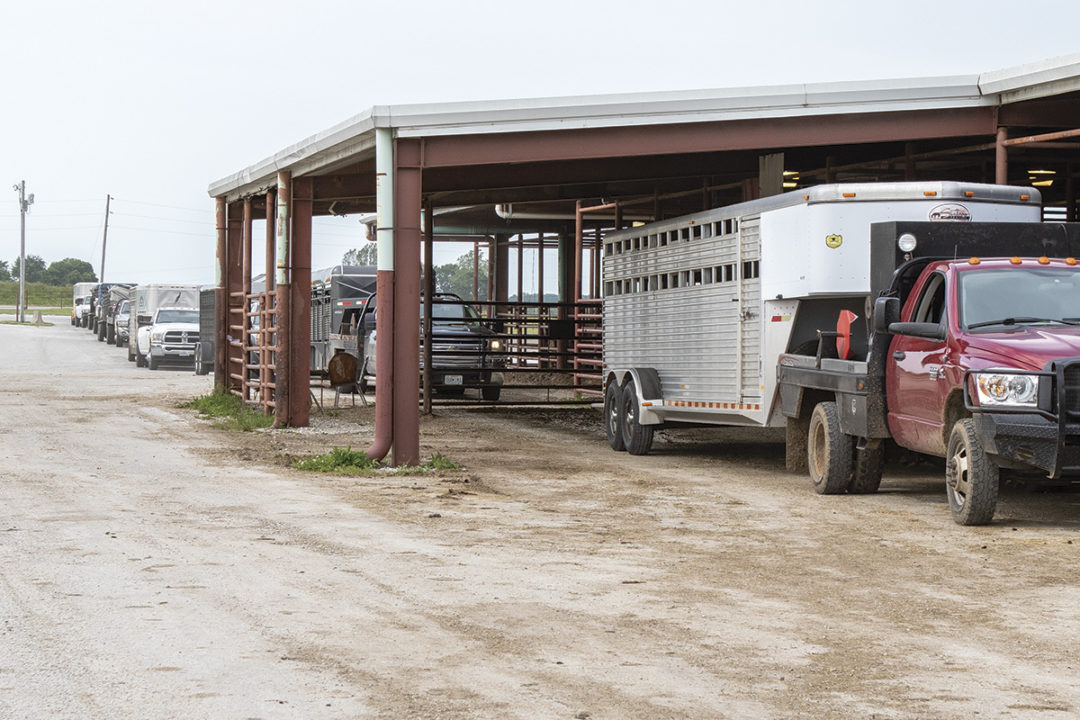It’s no secret drought has been raging through many western and southern states for some time now.
While compared similarly to the markets of 2011 and 2012, today’s cattle market looks like something we have never seen before. Between drought, higher cost of inputs and a world recovering from a pandemic, producers are struggling to stay afloat and plan for the future.
“With a drought this serious for this long, we are really seeing a lot of cow culling,” says David Anderson, a livestock and food product marketing professor and extension economist specialist at Texas A&M University. “In fact, we've had, in the last six weeks, more than 80,000 head of beef cows going to market per week. And that's really the biggest amount we have seen in a decade.” The 80,000 head is compared to the 66,000 per week culled a year ago, Anderson says.
“The drought in Arkansas has been particularly bad, and we're seeing about 20 percent higher, in terms of numbers, of cull cows being sold just in Arkansas,” says James Mitchell, an agricultural economics and agribusiness assistant professor and extension livestock economist at the University of Arkansas. “In the first 30 weeks of this year, we've sold about 25,000 head of cull cows. During the same time period last year, we sold about 20,000 head of cull cows. So, about a 20 percent increase from the previous year just in Arkansas, and that’s similar to what’s going on around the U.S.”
While we’ve experienced droughts in the past, one thing that is different currently is the consumer demand for ground beef is higher than normal, Anderson says. With food prices increasing, consumers are looking for less steaks and more ground beef because it is one of the least-expensive beef products. Because of this increased demand for ground beef, cull cow market prices have stayed relatively high compared to other times of drought when the large quantities of cull cows would have decreased the price of them, as most ground beef comes from cull cows.
A look at the future market
The thing that makes this year a little different and more challenging, relative to past drought years, is that we're still coming out of a global pandemic and dealing with the issues the pandemic caused in our economy.
“I'd say broad-based supply fundamentals are going to be really supportive of cattle prices this fall, assuming nothing else changes,” Mitchell says. “U.S. cattle inventories have been in decline since about 2019. And the drought came during a period of time when we've already been seeing declines in cattle numbers, just kind of exacerbating that.”
Because of drought impacts, it's very likely some calves will be weaned and sold sooner and at a lighter weight than they normally would be, says Josh Maples, an associate professor and extension economist at Mississippi State University.
“Currently, we are seeing what we saw following the big drought in the southern Plains in 2011 and 2012,” Anderson says. “This means we're going to have beef production that rivals what we had after the drought. I also think that means we'll likely be talking about record high calf prices, a couple of years down the road from here, simply because we're going to have a smaller herd and they have fewer calves. We're going to have less beef production, and really, that sets the stage for much higher prices.”
Additionally, the ability to have more calves on the ground next year, if you can do it in a cost-effective manner, is going to pay off, Maples says.
Resources for producers
“When it comes to drought, it's one of the problems [where] we feel like there's nothing we can do and we're just at the mercy of weather,” Mitchell says. “And, in a lot of ways, sometimes that's true. But there are resources out there that cattle producers can start looking to.”
With high feed prices, it’s best to start preparing your finances now, Mitchell says. Calculate the feed you have and what you will need to supplement. Make herd cuts now to make sure you can support your herd moving forward.
“You shouldn't have to start building a plan for drought mitigation when you're in the middle of a drought,” Mitchell says. “Start thinking about grazing and nutritional strategies to help mitigate the losses from this drought and others moving forward.”
One of the best sources of unbiased information you can get is from your county extension office or county ag agent, Maples says. Many county extension services provide Excel-based decision aids to help work through your finances. Also, some USDA farm program disaster-type programs are available to farmers and ranchers to provide support to get through a drought. Additionally, the USDA Agricultural Marketing Service provides weekly livestock auction summaries to go along with your local state and sale barn prices.
“I think most people have been through droughts before and kind of have an idea what to do,” Anderson says. “And I think that's why we see so many cows go into market is because folks are making decisions and acting on what's going on.”
Whether or not we are repeating history in the years following the southern drought of 2011 and 2012, it’s agreed upon by all that every cow killed this year means one less calf next year. Producers can expect to see sharply lower beef production over the next several years with increased market prices. While nothing is for certain, it is certainly a positive outlook.








